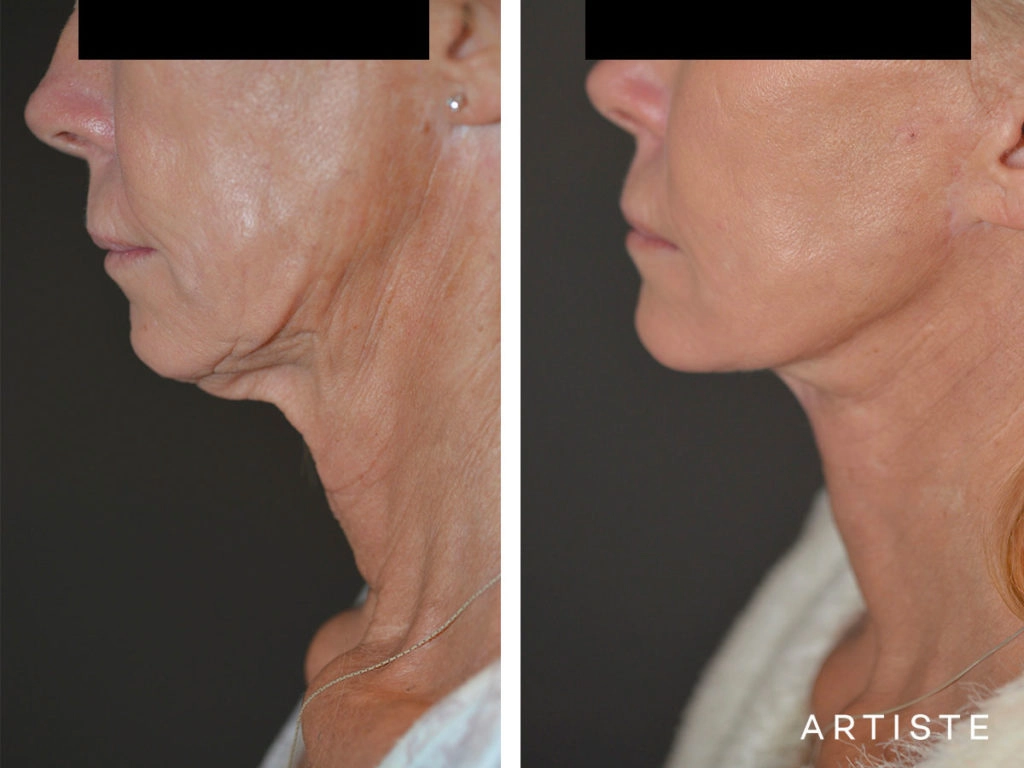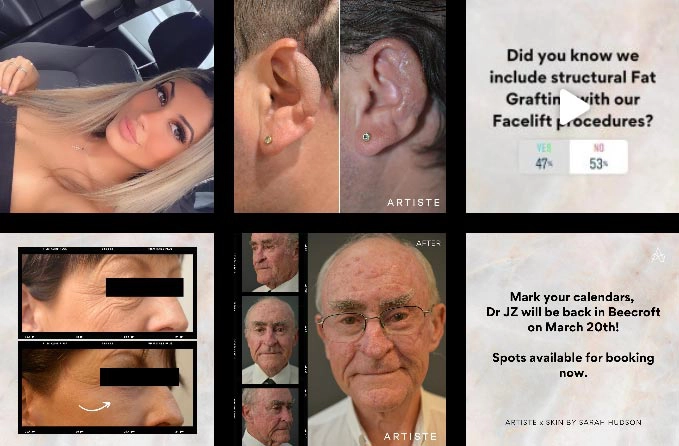How long does a Neck Lift Last?
Model featured in photography

Some people considering a neck lift wonder if the results will last as long as they hope. It’s important to settle this misconception: there is no definitive answer to how long the results of a neck lift will last. The longevity of the outcome depends on factors like individual ageing, skin quality, and lifestyle habits.
A neck lift typically involves removing excess skin and tightening the underlying muscles to create a smoother neck and more defined jawline. While the procedure can deliver noticeable results, it’s essential to approach it with realistic expectations.
If you’re considering this surgery, you have every right to know what it entails—its potential benefits, limitations, and what you can do to maintain your results. Discussing your goals, concerns, and the expected outcomes with your surgeon is a vital part of the decision-making process. Remember, the longevity of the results is as unique as each patient.
The results of the surgery can last from 10 to 15 years with proper care. If you are considering a neck lift surgery, these potential benefits might be worth considering
1. Smoothening of the skin around the neck
Natural chances in the skin and the tissues beneath lead to wrinkles and creases in the neck area. Reduced collagen production, loss of skin elasticity and gravity all are significant factors in these changes. The thin becomes thinner and less resilient over time, which may lead to looseness, development of fine lines, and deeper folds.
A neck lift may address these concerns by tightening the platysma muscle and surgically removing excess skin. It allows the skin to “conform” more smoothly to the neck and jawline’s shape.
As we age, creases along the neck area start to appear. With a neck lift surgery, your neck will tighten and get smoother in texture.
2. Reduces the appearance of excess skin in the chin area
A study has highlighted the potential advantages of a deep neck lift to addressing excess skin in the chin area, informally known as a “double chin”. The submentoplasty procedure focuses on the region beneath the chin. It removes excess fat in this region, tightens the platysma muscle to create a supportive “muscular sling”, and redrape or adjust the skin to align with the neck’s natural shape.
A submentoplasty may achieve notable improvements but the results depend on various factors including skin elasticity, overall health, post-operative care, and the surgeon’s experience.
But we want to emphasise that the appearance of a fuller chin or neck is not inherently undesirable. For some people, it’s a natural part of their facial structure or a sign of ageing. But we also do respect the wishes of individuals who wish to alter or address it through cosmetic means.
In short, there’s no definitive timeline for how long neck lift results will last. For some, the outcome can remain noticeable for a decade, while others may find the effects persist for shorter or longer periods. This variability is influenced by numerous factors, including age, genetics, lifestyle choices, and how well post-operative care instructions are followed.
What’s important to remember is that a neck lift is not a permanent solution to the natural ageing process. Over time, the skin will continue to age, and some degree of sagging may eventually return. However, the procedure can provide long-lasting improvements that you may be satisfied with.
Disclaimer: At Artiste Plastic Surgery, our Plastic Surgeons led by Dr Jack Zoumaras have been trained to the highest possible degree. All surgery has risks and it is always advised to get a second opinion. Risks are very real and we cannot guarantee any result. Results are illustrated as a guide only. All risks are managed and any need for revision surgery or complications (1-5%) can be managed by our specialist plastic surgeons.
Any statements on how you will feel is based on Level V Evidence:
Level V: How you will feel after plastic surgery varies between individuals, depending on psychological and physical factors. Our internal research is based on how patients in our practice feel after surgery.
The blogs are not a substitute for a medical consultation and do not form as part of the doctor to patient relationship.
SHARE THIS ARTICLE
Jul01
Facelift Recovery Tips: What Speeds Up Healing and What to Avoid
Disclaimer: At Artiste Plastic Surgery, our Plastic Surgeons led by Dr Jack Zoumaras have been trained to the highest possible degree. All surgery has risks and it is always advised ...
Jul01
How to Prepare for Facelift Surgery: What to Do Before Your Big Day
Disclaimer: At Artiste Plastic Surgery, our Plastic Surgeons led by Dr Jack Zoumaras have been trained to the highest possible degree. All surgery has risks and it is always advised ...
ABOUT ARTISTE
Artiste Plastic Surgery is an Award Winning Specialist Plastic Surgery practice led by internationally trained Dr. Jack Zoumaras, Plastic Surgeon and Peer Reviewed Face Surgeon
Artiste offers the latest Cosmetic Surgical Procedures of the Face, Breast and Body, inspired from leading centres around the world.
STAY IN THE LOOP
Enter your email address below to receive updates on new articles and VIP access to promotions and special offers.
FOLLOW US ON INSTAGRAM










